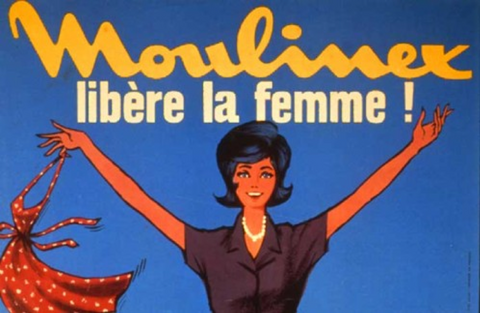
The apron in the collective imagination
Once upon a time there was an apron...
From a grandmother's uniform to an allegory of craftsmanship , the apron has had multiple connotations since the beginning of the 20th century. An overview of a legendary work garment!
The apron, once upon a time
That dear apron... That simplistic uniform, with a thousand and one uses, so popular in the mid-20th century. Certainly the most faithful companion of our great-grandmothers. When it wasn't used to protect the dress underneath, it served as a glove to remove a hot pan from the stove or as a basket to carry vegetables from the garden and eggs from the henhouse. It was also the favorite refuge of children intimidated by unknown visitors, hence the expression "hiding in one's mother's petticoats." As an excerpt from Nouvelles de la vallée du Ciron so aptly concludes, "it will be many, many years before someone invents something that can replace that good old apron that was used for so many things."
Across the Atlantic, the apron was an iconic object. In an America devastated by World War II and then the Great Depression, it clothed this matriarch who cared for her family. Its representation in the illustrations evokes family unity, convivial cooking, and the domestic table never short of food. In short, the good life of a home perfumed with the scent of apple pie. Let's eat!
 What would Thanksgiving be without an apron?
What would Thanksgiving be without an apron?  Mrs. Judson, the kind housekeeper in Basil of Baker Street
Mrs. Judson, the kind housekeeper in Basil of Baker Street
The apron yesterday
The end of the 20th century saw a shift in the perception of the apron. The mother devoted to domestic well-being was no longer a popular choice in the collective consciousness. In her fall, she irrevocably dragged down her most faithful accessory. The apron then appeared as a relic of the outdated archetype of the housewife. It was sacrificed on the altar of a new feminine ideal, that of a woman freed from her domestic duties. The expression “rendre son tablier” marked its entry into popular language, and certain advertisements surfed on this new paradigm.

Banished from the home and kitchen catalogs, the apron is finding refuge among artisans and food trades . Its professional use is becoming more democratic. Its style is evolving.
The apron of our days
In the last decade, the apron has regained its nobility more than ever. Gone is the old-fashioned and domestic image, the apron embodies a revolution of values. It has become the emblem of a generation of neo-artisans erected as a safeguard against a world that is changing too quickly; the standard of authenticity, of unique creation, of “homemade” in opposition to the phenomena of industrialization and mass production. It is the faithful companion of those who think and do, ambassadors of the intelligence of the hand .
Yes, the apron is back in the spotlight! Just like crafts.
In English-speaking countries in particular, it enjoys a peak of popularity. Makers, bartenders, and other baristas love it for its very trendy retro image .
 Special blue tango apron for Les Petits Frenchies
Special blue tango apron for Les Petits Frenchies
Are you a supporter or participant in this artisanal creation movement?
All that's left is to equip yourself!
Atelier TB aprons reconnect with Vosges textile know-how and are available in a variety of colors and natural fabrics. You can find the bib collection here .
PS: Did you know? The word apron comes from the French word napperon, a small piece of fabric placed under tableware.












